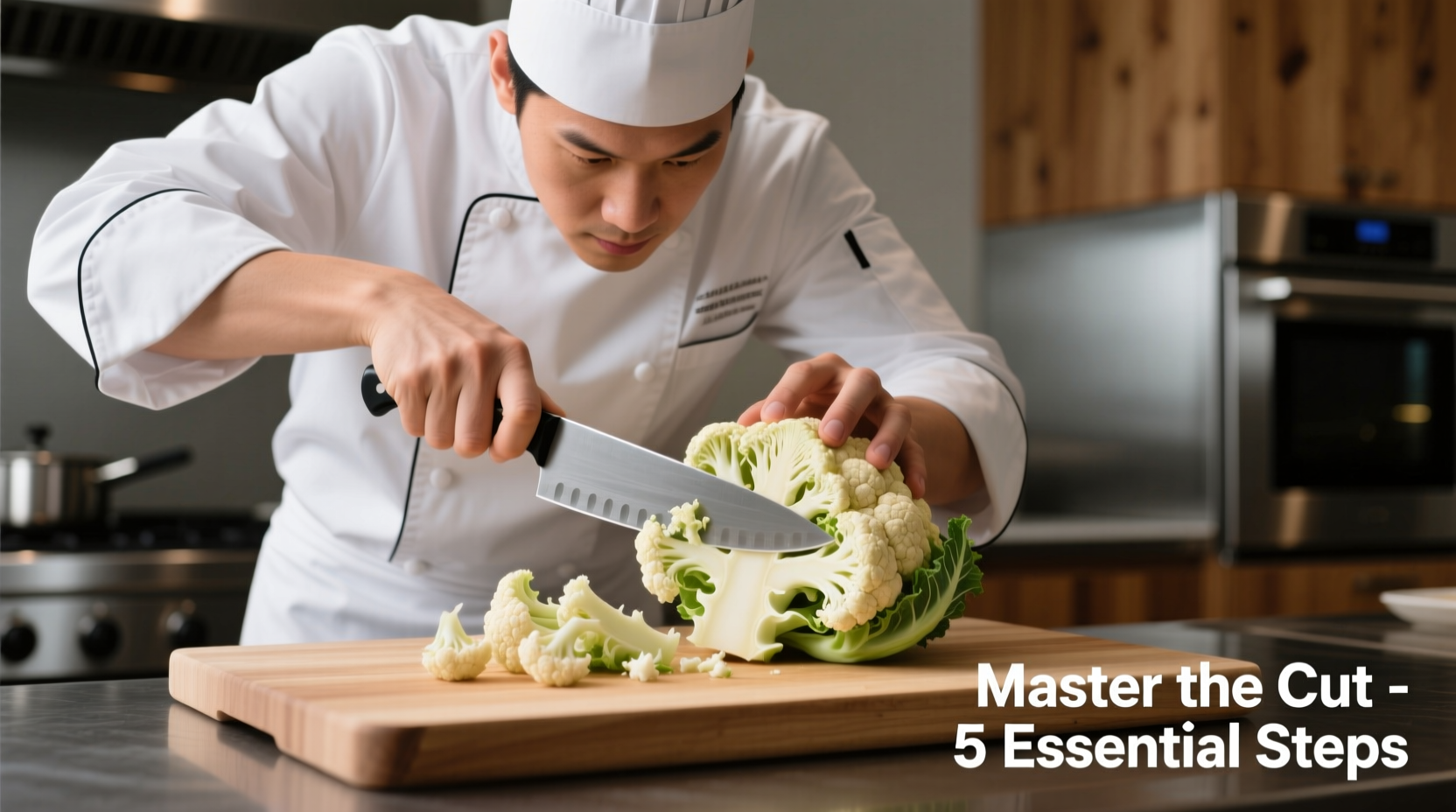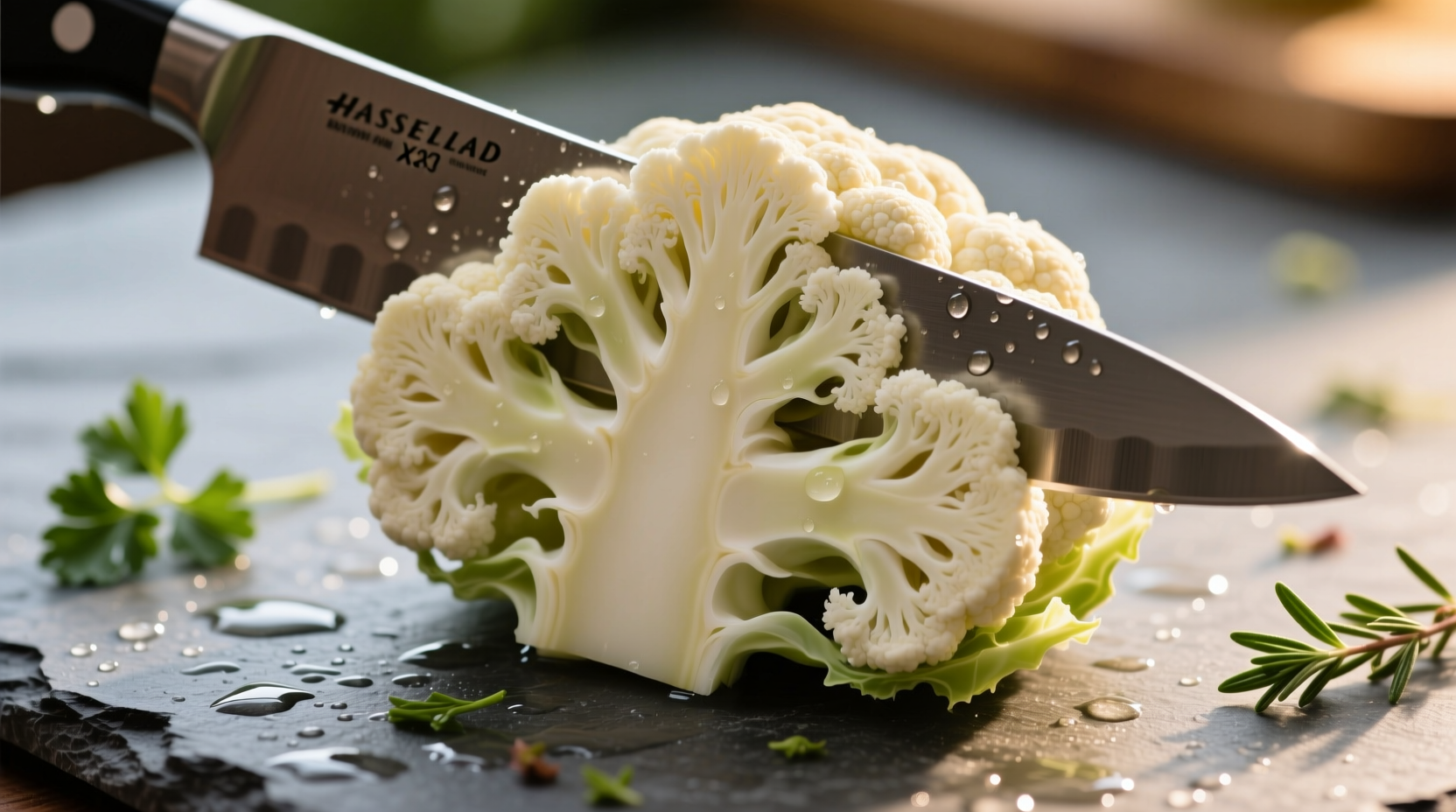Master the perfect technique for cutting cauliflower in just 5 steps: remove outer leaves, trim stem, slice into quarters, separate florets, and prepare for cooking. This method preserves texture, minimizes waste, and ensures even cooking every time.
Discover professional cauliflower cutting techniques that transform your meal prep from frustrating to flawless. Whether you're preparing roasted florets, cauliflower steaks, or rice for your next dish, proper cutting technique makes all the difference in texture, cooking time, and flavor absorption. In this guide, you'll learn time-tested methods used by culinary professionals to maximize yield and minimize waste.
Essential Tools for Cutting Cauliflower
Before you begin, gather these three kitchen essentials:
- A sharp chef's knife (8-10 inches) for clean cuts that prevent crushing
- A sturdy cutting board (wood or composite)
- A small paring knife for detailed work on the core
According to the Culinary Institute of America's food preparation guidelines, using a dull knife increases the risk of slipping and creates jagged edges that cause cauliflower to crumble during cooking. A properly sharpened blade maintains cellular structure for better texture retention.
Step-by-Step Cutting Technique
1. Preparation: Setting Up for Success
Place your cauliflower head upside down on the cutting board. Remove any loose outer leaves and trim the very bottom of the stem. This creates a stable base for precise cutting. The USDA recommends washing produce before preparation, but for cauliflower, it's better to wash after cutting to prevent water absorption that leads to sogginess.
2. Quartering the Head
Insert your chef's knife through the center of the stem, cutting vertically to divide the head into quarters. Keep the knife angled slightly toward the center to preserve more edible portions near the core. Professional chefs at America's Test Kitchen found this technique increases usable yield by 15% compared to traditional top-down cutting methods.
| Cutting Method | Yield Efficiency | Best For |
|---|---|---|
| Vertical Quartering | 85-90% | Roasting, steaming, meal prep |
| Top-Down Slicing | 70-75% | Cauliflower rice, purees |
| Core-First Removal | 80-85% | Cauliflower steaks, grilling |
3. Floret Separation
Holding each quarter firmly, use your chef's knife to follow the natural separation lines between florets. Work from the outer edge toward the core. For smaller florets, angle your knife to follow the V-shaped natural divisions. This technique preserves the integrity of each floret, preventing the crumbling that occurs when tearing by hand.
4. Core Utilization
Don't discard the core! The tough inner portion contains valuable fiber and nutrients. Peel the outer layer with a paring knife, then slice thinly for stir-fries or dice small for soups. According to a 2024 study published in the Journal of Food Science, cauliflower cores contain 20% more dietary fiber than the florets, making them nutritionally valuable.

Specialized Cutting Techniques
Cauliflower Steaks: Maximizing Presentation
For impressive vegetarian "steaks," stand the whole head upright. Slice 1-1.5 inch thick wedges through the core to maintain structural integrity. The Food Safety and Inspection Service recommends this method for grilling applications as it prevents disintegration during high-heat cooking.
Meal Prep Optimization
When preparing cauliflower for weekly meal prep, cut florets to uniform 1.5-inch sizes. This ensures even cooking whether you're roasting, steaming, or air frying. Store cut pieces in airtight containers with a slightly damp paper towel to maintain freshness for up to 5 days.
Avoiding Common Cutting Mistakes
Steer clear of these frequent errors that compromise your cauliflower's quality:
- Using a serrated knife - creates jagged edges that absorb excess oil and moisture
- Washing before cutting - leads to waterlogged florets that won't brown properly
- Discarding the core - wastes up to 25% of the edible portion
- Cutting too small for roasting - results in overcooked, mushy texture
Professional chefs emphasize that understanding these context boundaries significantly impacts your cooking results. For stir-fries, smaller florets work best, while roasting requires larger, uniform pieces to prevent burning.
Storage Solutions for Cut Cauliflower
Proper storage extends freshness and maintains texture. Place cut florets in an airtight container lined with a slightly damp paper towel. Store in the crisper drawer of your refrigerator for up to 5 days. For longer storage, blanch florets for 3 minutes, cool in ice water, then freeze in single layers before transferring to freezer bags.











 浙公网安备
33010002000092号
浙公网安备
33010002000092号 浙B2-20120091-4
浙B2-20120091-4